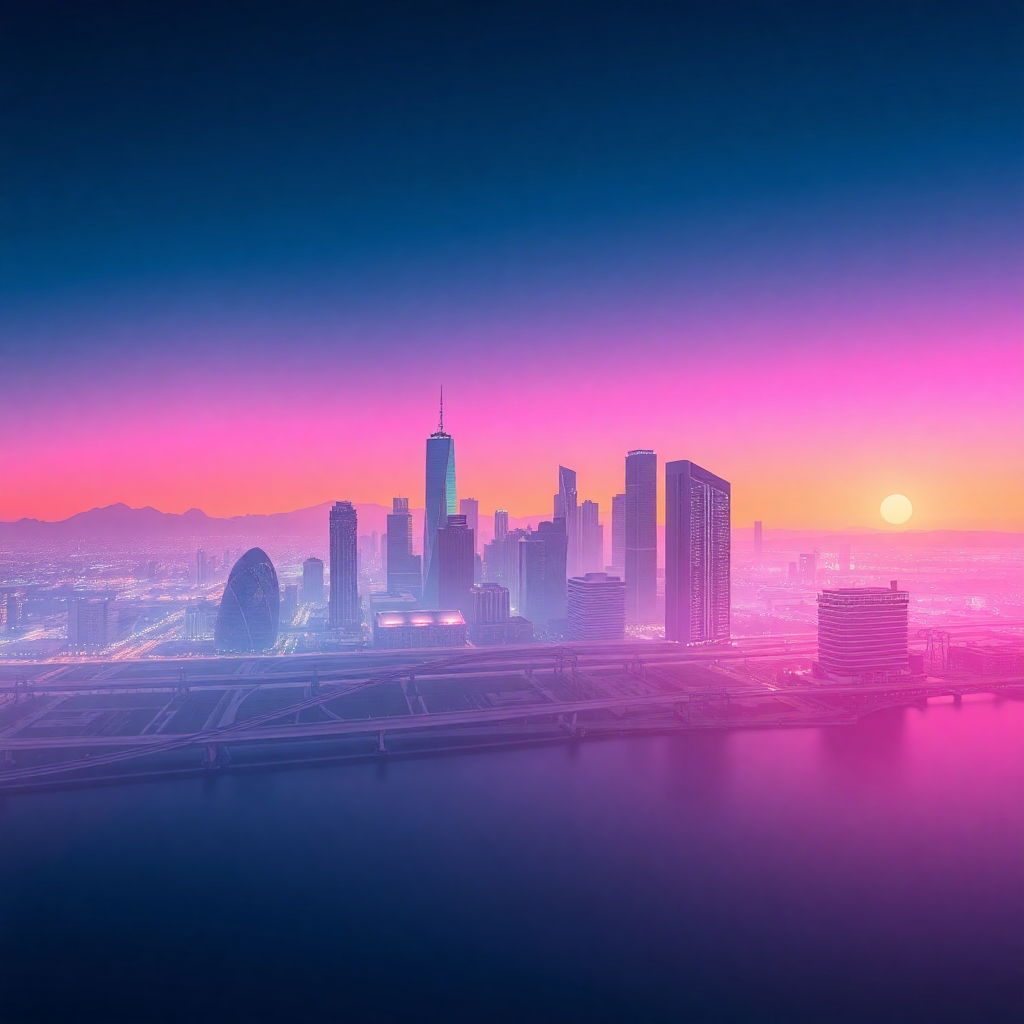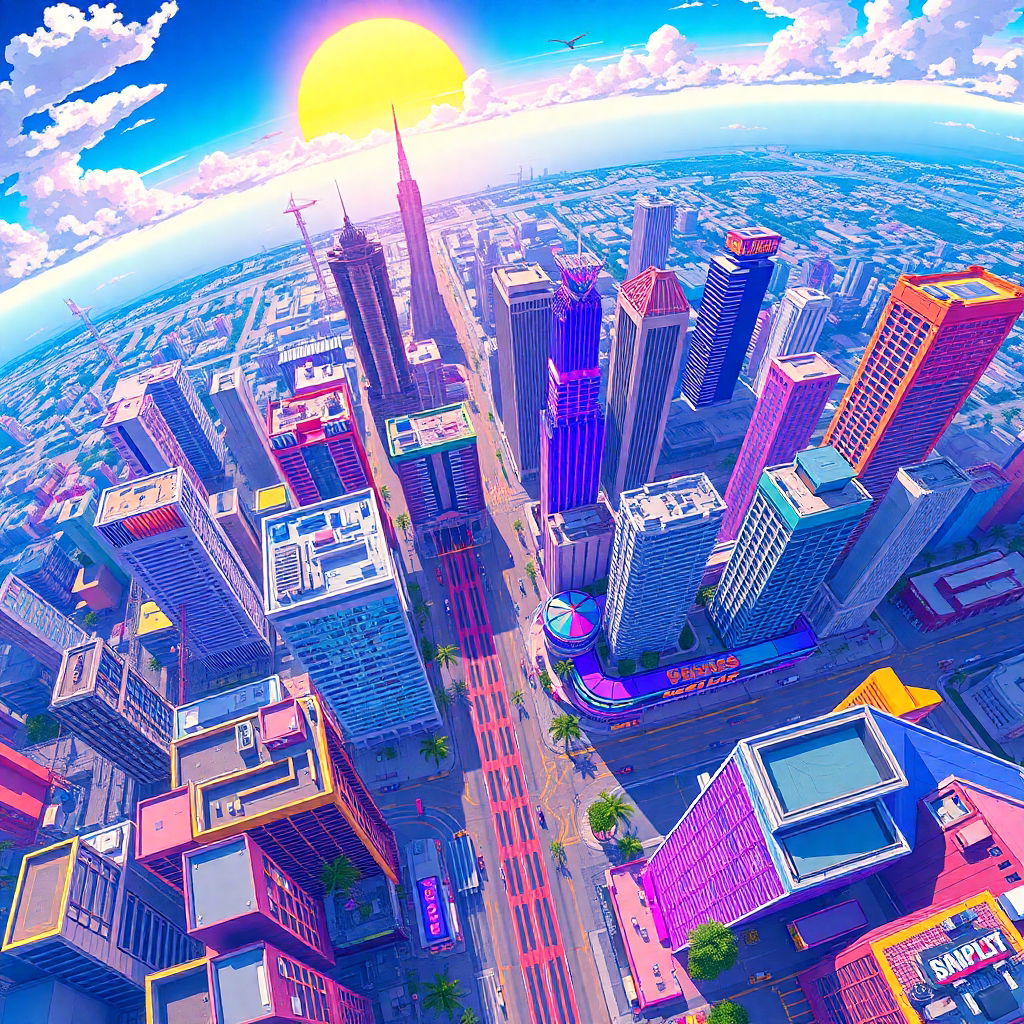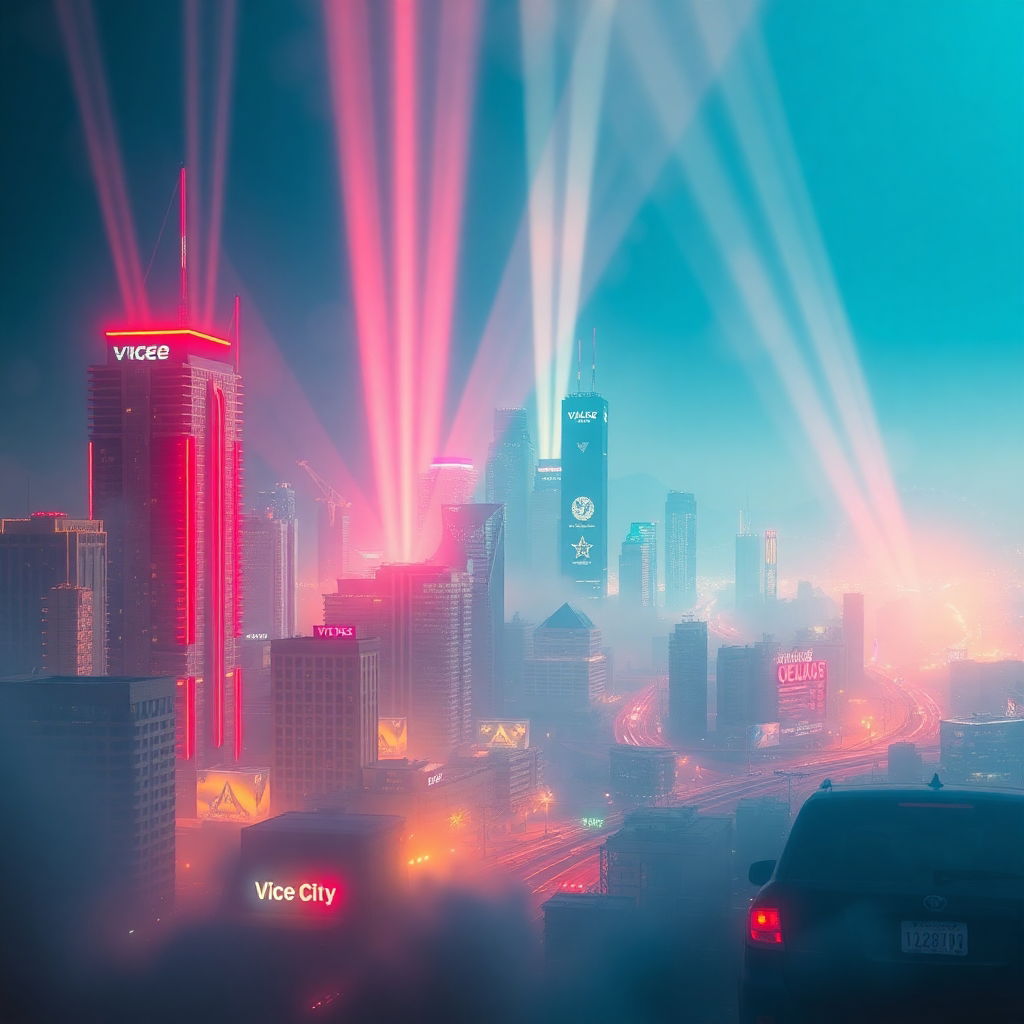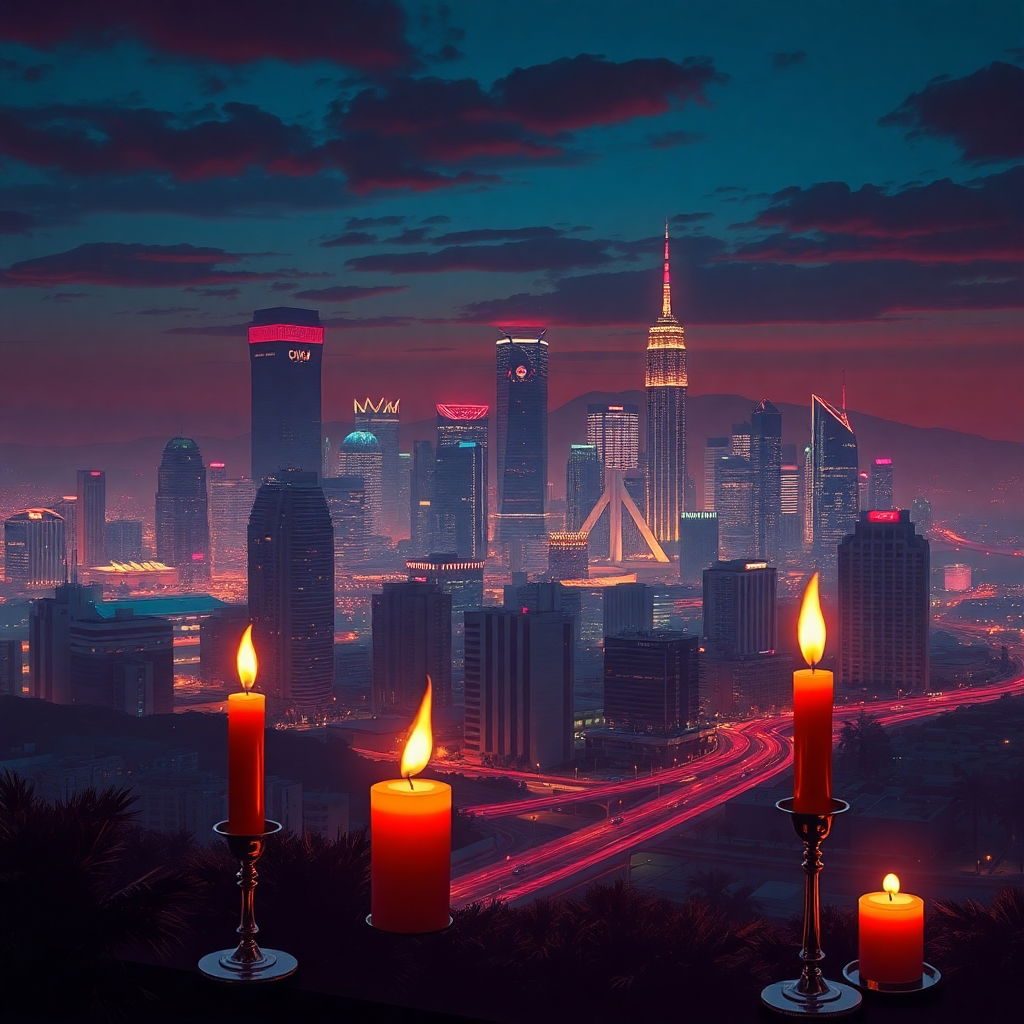Psychedelic Futuristic America
In the year 2099, America doesn’t sleep—it pulses. The skyline shimmers with shifting geometry. Cities are not built from steel and glass but from code and color, dream and desire. The American Dream hasn’t vanished; it’s been rebranded, rerouted, and rendered holographic.
Welcome to Psychedelic America 2099, where dreamers are data designers, dropouts are cosmic influencers, and dealers don’t push street drugs—they sell curated ego deaths and designer enlightenment. Capitalism has ascended into the metaphysical. The hustle now happens on the astral plane.
This is the new frontier: mind as marketplace, consciousness as commodity, and spirituality delivered like a streaming service.
The American Dream Gets Upgraded
Once, the American Dream was about bootstraps and white picket fences. Now, it’s about personal expansion, holographic wealth, and psychic influence. In 2099, success isn’t defined by owning land—it’s measured in lucidity, network reach, and psycho-spiritual bandwidth.
No one wants to own a house anymore—they want to own their own custom-designed reality. They don’t climb ladders; they hack them. They don't go to college; they drop out to start underground temples in digital jungles or become AI shamans for the ultra-rich.
Everyone’s an entrepreneur in the soul economy.
Hustling in the Psychedelic Underground
The streets aren’t streets anymore. They’re energy grids overlaid with fractal AR. In cities like Lucidonia (formerly Los Angeles), hustlers sling more than narcotics—they deal mindware: synthetic DMT, telepathic enhancements, trauma-smoothing loops, dream-sequencing apps.
- Dreamers launch start-ups built around collective dream-sharing experiences.
- Dropouts lead revolutionary communes inside quantum VR domes, powered by solar mushrooms and bio-neural tech.
- Dealers move through the ether like digital magicians, selling metaphysical upgrades and emotional jailbreaks.
It’s a renaissance of the weird, a culture of altered cognition with its own slang, saints, and syndicates.
Psychedelics Go Corporate, Then Go Wild
Once taboo, psychedelics are now the default interface for the soul. Corporations have their own sacred shamans, and CEOs go on biannual ego-death retreats at “neural monasteries” built inside former data centers. Psilocybin is as common as coffee. LSD has been nano-formulated for mood regulation. Ayahuasca has gone subscription-based.
But the real magic isn’t in the licensed clinics—it’s in the alleys of the consciousness underground, where rogue bio-alchemists remix molecules and mindsets. You might trip on a blend of ancestral plant tech, algorithmic poetry, and audio-reactive geometry, all wrapped in a quantum blockchain ritual.
And what’s the goal? Not healing, necessarily. Not productivity.
Transcendence with flair.
Rebirth as a brand.
From Hustle Culture to Mystic Capital

In 2099, hustle culture has gone cosmic. Influencers don’t just sell products—they sell vibes, realities, downloadable selves. You can purchase a temporary “celebrity aura” or inject a viral emotion into your social sphere. Enlightenment is on the menu, but it comes with product placement.
And yet, there's something real underneath all this simulation: a raw desire to break free, to become whole, to touch something beyond. The Dream is no longer about making it—it’s about awakening through it.
The capital of the future is symbolic resonance. The currency is attention charged with intent.
Dreamers as Revolutionaries
Among the neon-lit temples and soul-hacking side hustles, there are still those who remember the Dream’s original myth: freedom, vision, transformation. In this America, dreamers are rebels. They rewire systems from the inside, using psychedelic insights to tear down archaic scripts of control.
They create flash-mobs of ecstasy, temporary zones of unity, group rituals inside decaying malls. They remix religions into something potent and beautiful: a new spiritual operating system for the post-truth world.
And they're not fighting for utopia. They know better.
They're fighting for lucid liberation in the only place it still matters:
the mind.
The Hustle Is Holy Now

In Psychedelic America 2099, the line between sacred and profane, real and unreal, is gone. Hustlers are holy. Dropouts are designers. Dealers are digital sages. Everyone is just trying to find something real in the infinite scroll of existence.
And the Dream?
It's still alive.
It just wears a holographic halo, whispers in mushroom tongues, and asks you not what you’ll achieve… but how far you're willing to evolve.
Vice City Visions: The Psychedelic Core of 80s Excess and the Proto-Cyberpunk American Dream
In the glowing heart of 1980s Miami—reborn as Vice City in pop culture myth—an archetype emerged. Sun-drenched by day, neon-drenched by night, it was a place where cocaine cut through the humidity, synthesizers pulsed through palm-lined boulevards, and a dream was sold under the glittering guise of paradise. But beneath the surface of pastel suits and offshore money, something else was stirring. The American Dream, once tethered to white-picket fences and moral aspiration, was mutating—becoming louder, faster, more surreal. And in that mutation, a strange psychedelic current ran deep.
The American Dream Gets High

The 1980s were the era where success became style, and ambition morphed into spectacle. The Reagan-era fantasy promoted wealth, independence, and personal freedom—but in Vice City, those values took a psychotropic twist. It wasn’t just about climbing the ladder—it was about ascending into a larger-than-life persona. Psychedelics, stimulants, and spiritual chaos weren’t just escapism. They were tools. They cracked open the ego and let in the deluge of neon gods, money avatars, and existential hallucinations of becoming something more.
Everyone was playing a character. Everyone was chasing a feeling. The American Dream became a psychedelic experiment: how far could you push your identity before it cracked under the weight of desire?
Synthetic Realities and Mirror Worlds
Vice City wasn’t real—but that’s the point. It was a simulation of Miami, which itself had become a simulation of Los Angeles, Havana, and the Garden of Eden. In that fractal of artifice, meaning dissolved into aesthetic. And just like a psychedelic trip, Vice City offered no clear moral compass. It was a shifting mirage of possibility and paranoia.
What emerged was proto-cyberpunk: glossy surfaces hiding corruption, freedom laced with surveillance, and technology—music, TV, drugs, media—as portals into unreality. This wasn’t just decadence. It was a ritual of awakening disguised as a music video. The city became a hologram, and in its synthetic glow, people saw their shadow selves.
The Techno-Shaman’s Playground
In a way, the drug dealers and club kids were modern shamans. Armed with pills, beats, and aesthetic violence, they guided a generation through altered states. Vice City was their temple, and the ritual was excess. What we now recognize as cyberpunk spirituality—AI oracles, techno-mysticism, cybernetic enlightenment—had its seeds in this era.
Miami’s liminal culture laid the groundwork: humans interacting with machines, mass media as mind-control, spiritual experiences driven by sound and simulation. The palm trees were fake. The dreams were bigger than life. And behind every pair of Ray-Bans, a question flickered: What if this is all a dream within a dream?
The Dream That Dreamed Itself
The American Dream wasn’t abandoned in Vice City—it was rebuilt. Not for stability or virtue, but for experience, transformation, and ecstatic freedom. It was no longer about hard work. It was about hacking the system. Taking shortcuts through identity. Living mythically, even if it meant burning out like a neon flare over the Atlantic.
Fast forward to today’s cyberpunk cities—Tokyo streets at midnight, Vegas under LED rain, digital avatars in mirror-world metaverses—and we see the legacy. Vice City was the seed. The mushroom trip. The lucid dream of a future where the dream itself becomes the drug.
Conclusion: From Vice to Vision
Vice City wasn’t just a playground for excess. It was a prophetic vision of things to come. A psychedelic fractal of American ambition, where the pursuit of pleasure collided with a deeper yearning for transcendence.
In its synthwave echo, we still hear the heartbeat of a dream that dared to be more than real.
So take the ride. Feel the pulse. And ask yourself:
What if the American Dream was always meant to be a trip?
